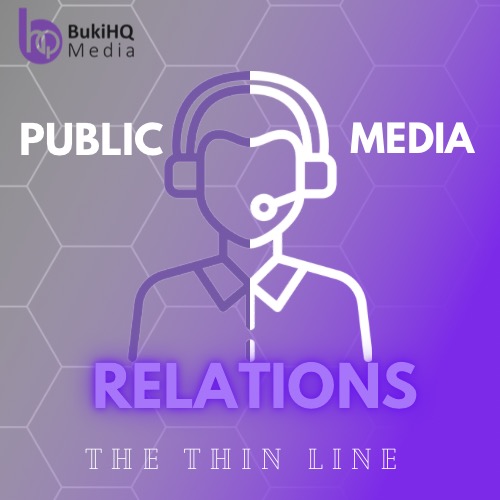
The difference between public relations and media relations can be confusing. They sound similar and even PR experts sometimes use them interchangeably.
In fact, as more platforms of communication develop, the lines between the two are seemingly more blurred than ever. However, there are specific aspects that separate these communication terms and it’s important to understand the terminologies before selecting a PR agency or embarking on a “PR campaign.”
Public Relations is defined as a strategic communication process that is targeted at building mutually beneficial relationships between organizations and their publics.”
While Media relations on the other hand, encompasses a brand’s interactions with a very specific audience: those individuals who comprise the public-facing press and news media. These could be editors and reporters at online and print media outlets like The Guardian and Punch, or producers from TV and Radio programmes.
Where the lines begin to blur is when everyday people act as journalists, using social media or blogging platforms to report on and even break news. It’s known citizen journalism (the collection, dissemination and analysis of news and information by the general public) and as it continues to grow, who can be looped under the category of “media” changes. And, as a result, so do the target audiences of media relations efforts.
Public relations uses multiple channels to generate public exposure. Media relations uses one which is the press.
Public relations looks to build the relationships between organizations and stakeholders. To do so, PR professional might use a variety of channels such as the brand or company’s website, blog, social media platforms or even a special event ( CSR, community outreaches, industry event participation and etc.) to communicate directly with its target audience.
Media relations focuses on one key channel: the press (Print, TV, Radio, Online blogs or even Social media). Using the press as the channel to communicate with stakeholders not only allows to meet those stakeholders where they already are using what they’re already reading, watching or listening to it also adds third-party validation and court endorsement for PR message. That third-party validation is valuable. Considering how much more powerful a message can be coming from top media house such as Forbes, BBC or CNN versus coming from a recently established company Twitter or Facebook account.
All media relations is public relations, but not all public relations is media relations. In other words, media relations is a special subset of public relations Just like we have consumer relations (CR), Investor relations (IR) as subsets of PR. If a business , individual or brand is looking for earned media coverage, it’s important to focus on Media Relations.
Public relations experts are charged with creating messages that best represent a brand. Today, these individuals have many tools at their disposal to help disseminate that message. Oftentimes if someone wants to increase the visibility of that message they might ask to “make it go viral” however, when it comes to increasing the reach of your message, the method is still the media. If a brand can plug its brand story into a timely event, a story about a prominent figure or something impacting a specific community, and connect with the right media outlet, the story has the potential to reach a larger audience and develop a brand equity.
Understanding the difference between public relations and media relations and how each can benefit a brand can help determine which best matches the needs of the brand.

